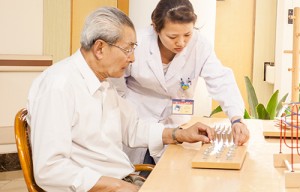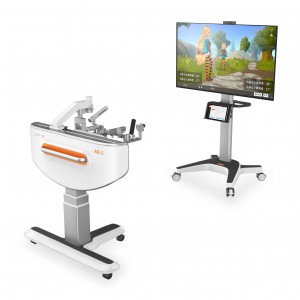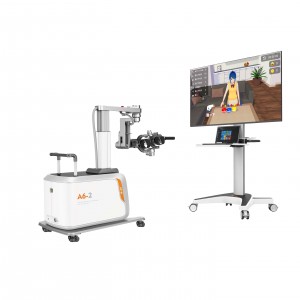After stroke, around 70% to 80% stroke patients are unable to take care of themselves due to the sequelae, causing great pressure on patients and their families. How can they quickly restore self-care ability through rehabilitation treatment has become a problem of great concern. Occupational therapy is gradually known as an important part of rehabilitation medicine.

1.Introduction to Occupational Therapy
Occupational therapy (OT for short) is a rehabilitation treatment method that applies purposeful and selected occupational activities (various activities such as work, labor, and recreational activities) to help patients obtain functional exercise so that their physical, mental, and social participation functions can be recovered to the maximum extend. It is a process of evaluation, treatment and training for patients who have lost their self-care and working ability to varying degrees due to physical, mental and developmental dysfunction or disability. This method focuses on helping patients to restore their abilities of daily living and work as much as possible. It is an important way for patients to return to their families and society.
The goal is to recover or enhance patient’s ability to live and work independently to the maximum extend so that he or she can lead a meaningful life as a member of the family and society. This therapy is of great value for the rehabilitation of patients with functional disabilities, which can help patients recover from functional disorders, change abnormal movement patterns, improve self-care ability, and shorten the process of returning to family and society.
2.Occupational Therapy Assessment
A.Occupational therapy for motor dysfunction:
Adjust patient’s nervous system function through occupational activities, improve muscle strength and joint mobility, enhance motor function recovery, improve coordination and balance ability, and gradually restore patient’s self-care ability.
B.Occupational therapy for mental disorders:
In occupational exercises, patients not only have to put in energy and time, but also need to enhance their sense of independence and rebuild their confidence in life. Problems such as distraction, inattention, and memory loss can be solved through occupational activities. Through collective and social activities, patients’ awareness of social participation and reintegration is cultivated.
C.Occupational therapy for activity and social participation disorders:
In the recovery period, patient’s psychological state may change. Social activities can help patients improve their sense of social participation, increase their confidence, feel connected to the society, adjust their psychological state, and actively participate in rehabilitation training.
3.Classification of Occupational Therapy Activities
A.Daily Activity Training
Train patients’ self-care ability, such as dressing, eating, walking, hand function training, etc. Restore their self-care ability through repeated training.
B.Therapeutic Activities
Improve patients’ dysfunction problems using carefully selected specific activities or tools. Take hemiplegic patients with upper limb movement disorders as an example, we can train their lifting, rotation and grasping functions with activities like pinching plasticine and screwing nuts so as to improve their upper limb motion function.
C.Productive Labor Activities
This type of activity is suitable for patients who have recovered to a certain extent, or patients whose functional impairment is not particularly severe. They also create economic value while performing occupational activity treatment (such as woodworking and other manual occupational activities).
D.Psychological and Social Activities
The patient’s psychological state will change to some extent during the postoperative period or recovery period. Through such activities, patients can adjust their psychological state and maintain a positive mental attitude.
4.Advanced Equipment for Occupational Therapy
Compared to traditional occupational therapy equipment, robotic rehabilitation equipment can provide a certain degree of weight support so that patients with weaker muscle strength can also lift their arms for occupational training. Moreover, the interactive games in the system can attract patients’ attention and improve their training initiatives.
Arm Rehabilitation Robotics A2

It accurately simulates the law of arm movement in real time. Patients can complete multi-joint or single-joint training actively. The arm rehab machine supports both weight-bearing and weight-reducing training on arms. And in the meanwhile, it has intelligent feedback function, three-dimensional space training and a powerful assessment system.
Arm Rehabilitation and Assessment Robotics A6

The arm rehabilitation and assessment robotics A6 can simulate the arm movement in real time according to computer technology and rehabilitation medicine theory. It can realize passive and active movement of arms in multiple dimensions. Moreover, integrated with situational interaction, feedback training and a powerful evaluation system, A6 enables patients to train under zero muscle strength. The rehab robot helps to train patients passively in the early period of rehabilitation, thus shortening rehab process.
Read more:
Limb Function Training for Stroke Hemiplegia
Application of Isokinetic Muscle Training in Stroke Rehabilitation
How does Rehabilitation Robot A3 Help Stroke Patients?
Post time: Mar-02-2022






